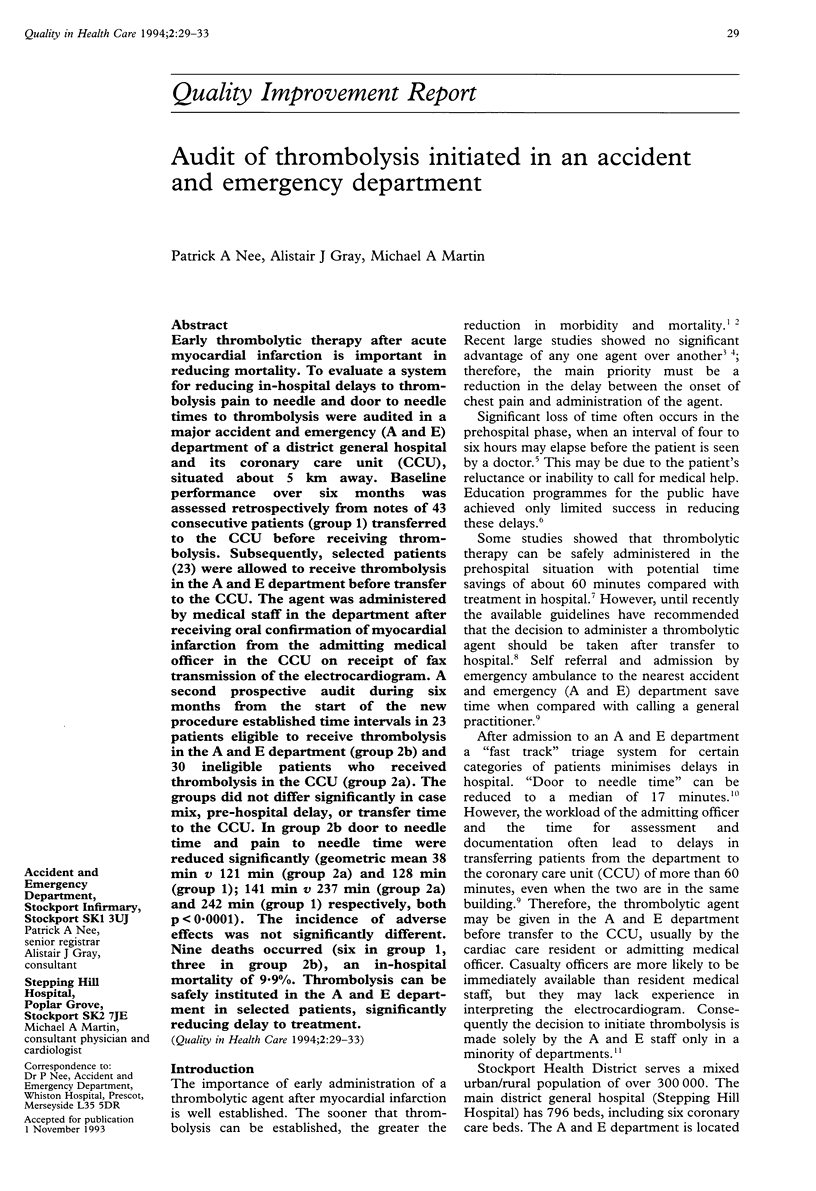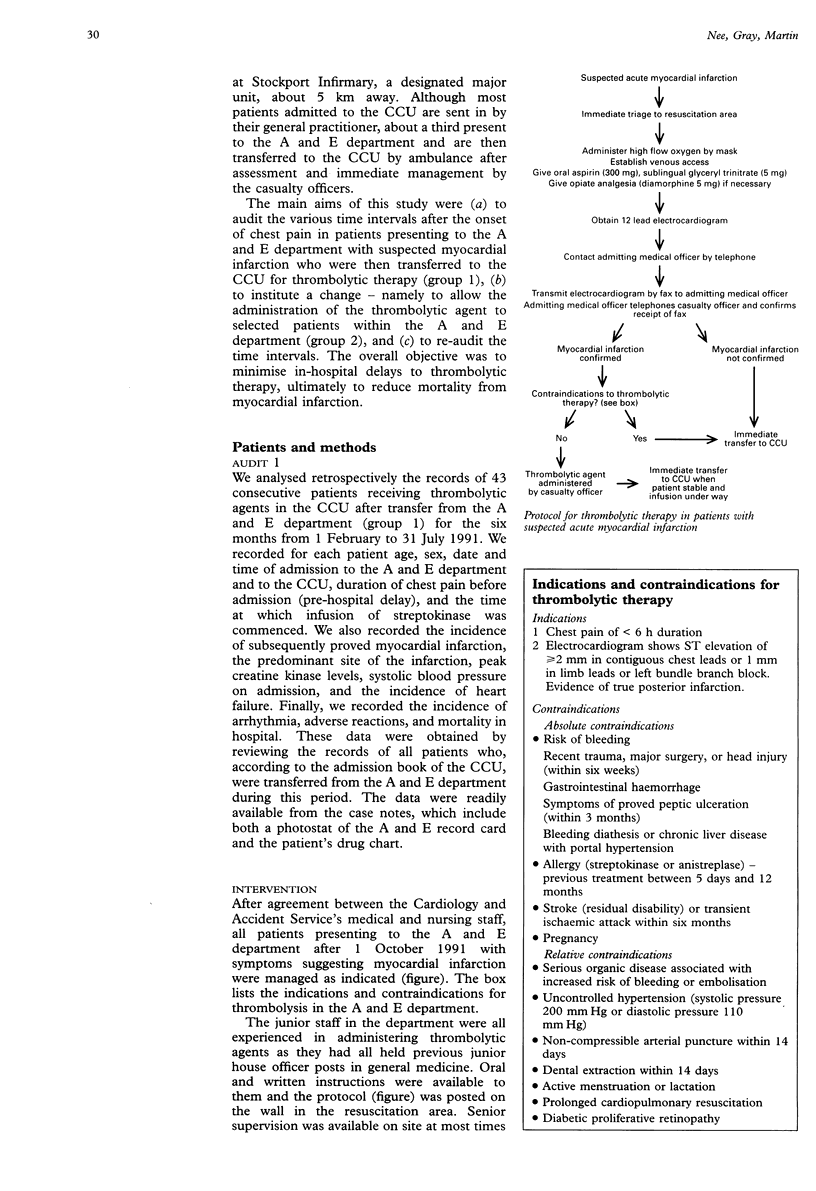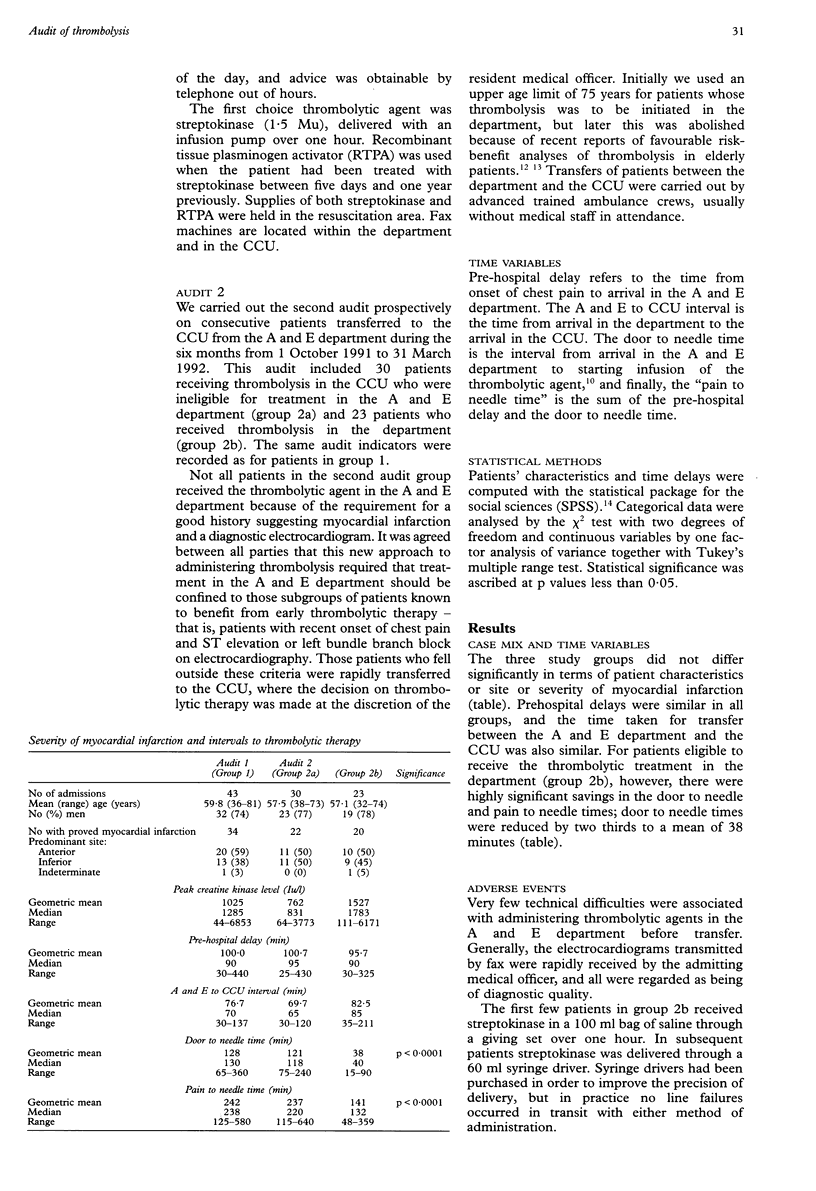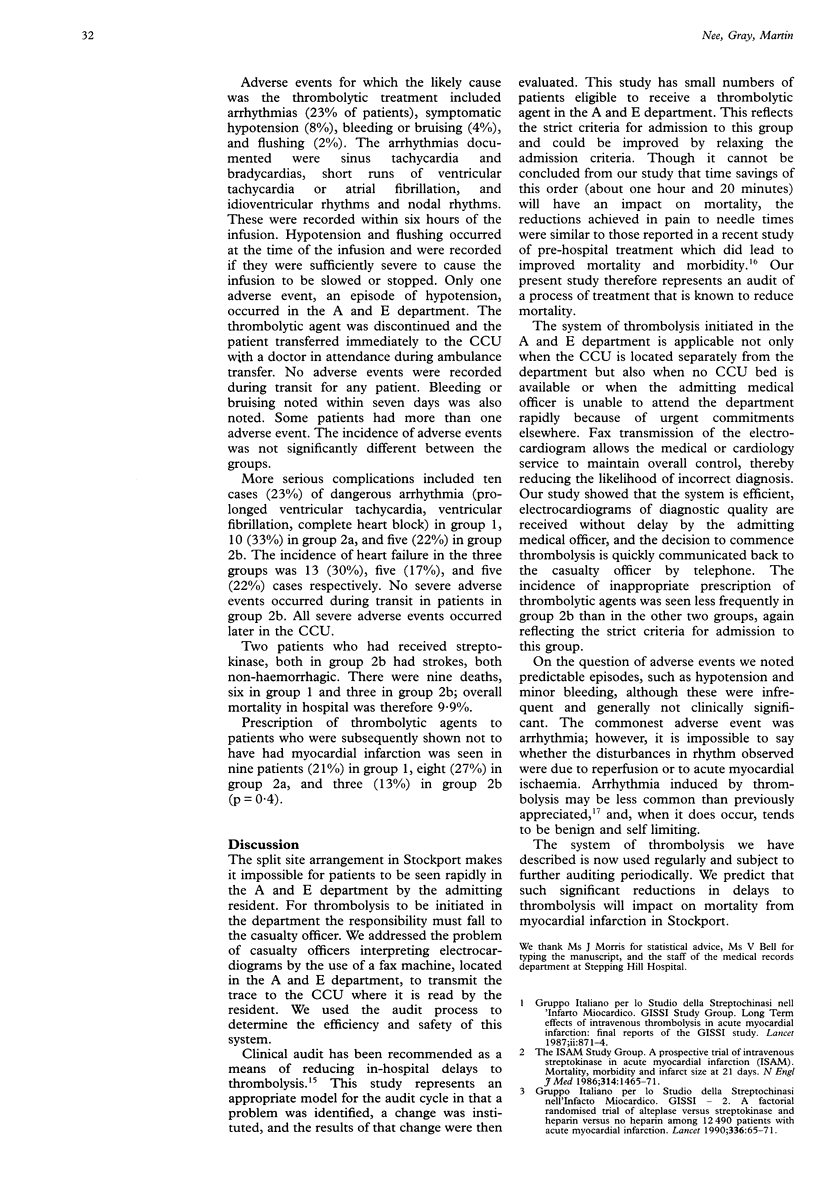Abstract
Early thrombolytic therapy after acute myocardial infarction is important in reducing mortality. To evaluate a system for reducing in-hospital delays to thrombolysis pain to needle and door to needle times to thrombolysis were audited in a major accident and emergency (A and E) department of a district general hospital and its coronary care unit (CCU), situated about 5 km away. Baseline performance over six months was assessed retrospectively from notes of 43 consecutive patients (group 1) transferred to the CCU before receiving thrombolysis. Subsequently, selected patients (23) were allowed to receive thrombolysis in the A and E department before transfer to the CCU. The agent was administered by medical staff in the department after receiving oral confirmation of myocardial infarction from the admitting medical officer in the CCU on receipt of fax transmission of the electrocardiogram. A second prospective audit during six months from the start of the new procedure established time intervals in 23 patients eligible to receive thrombolysis in the A and E department (group 2b) and 30 ineligible patients who received thrombolysis in the CCU (group 2a). The groups did not differ significantly in case mix, pre-hospital delay, or transfer time to the CCU. In group 2b door to needle time and pain to needle time were reduced significantly (geometric mean 38 min v 121 min (group 2a) and 128 min (group 1); 141 min v 237 min (group 2a) and 242 min (group 1) respectively, both p < 0.0001). The incidence of adverse effects was not significantly different. Nine deaths occurred (six in group 1, three in group 2b), an in-hospital mortality of 9.9%. Thrombolysis can be safely instituted in the A and E department in selected patients, significantly reducing delay to treatment.
Full text
PDF




Selected References
These references are in PubMed. This may not be the complete list of references from this article.
- Cobbe S. ISIS 3: the last word on thrombolysis? BMJ. 1992 Jun 6;304(6840):1454–1455. doi: 10.1136/bmj.304.6840.1454. [DOI] [PMC free article] [PubMed] [Google Scholar]
- Grines C. L., DeMaria A. N. Optimal utilization of thrombolytic therapy for acute myocardial infarction: concepts and controversies. J Am Coll Cardiol. 1990 Jul;16(1):223–231. doi: 10.1016/0735-1097(90)90482-5. [DOI] [PubMed] [Google Scholar]
- Hackett D., McKenna W., Davies G., Maseri A. Reperfusion arrhythmias are rare during acute myocardial infarction and thrombolysis in man. Int J Cardiol. 1990 Nov;29(2):205–213. doi: 10.1016/0167-5273(90)90223-r. [DOI] [PubMed] [Google Scholar]
- Ho M. T., Eisenberg M. S., Litwin P. E., Schaeffer S. M., Damon S. K. Delay between onset of chest pain and seeking medical care: the effect of public education. Ann Emerg Med. 1989 Jul;18(7):727–731. doi: 10.1016/s0196-0644(89)80004-6. [DOI] [PubMed] [Google Scholar]
- Kennedy J. W. Expanding the use of thrombolytic therapy for acute myocardial infarction. Ann Intern Med. 1990 Dec 15;113(12):907–908. doi: 10.7326/0003-4819-113-12-907. [DOI] [PubMed] [Google Scholar]
- MacCallum A. G., Stafford P. J., Jones C., Vincent R., Perez-Avila C., Chamberlain D. A. Reduction in hospital time to thrombolytic therapy by audit of policy guidelines. Eur Heart J. 1990 Aug;11 (Suppl F):48–52. doi: 10.1093/eurheartj/11.suppl_f.48. [DOI] [PubMed] [Google Scholar]
- McCallion W. A., Templeton P. A., McKinney L. A., Higginson J. D. Missed myocardial ischaemia in the accident & emergency department: E.C.G. a need for audit? Arch Emerg Med. 1991 Jun;8(2):102–107. doi: 10.1136/emj.8.2.102. [DOI] [PMC free article] [PubMed] [Google Scholar]
- Pell A. C., Miller H. C. Delays in admission of patients with acute myocardial infarction to coronary care: implications for thrombolysis. Health Bull (Edinb) 1990 Sep;48(5):225–231. [PubMed] [Google Scholar]


